The Impact of All-In-One Platforms on Reducing Workflow Friction

Having too many apps at work that don’t operate well together can make things harder. To keep their information up to date, teams spend a lot of time switching between different chat apps, task trackers, and document systems. This split apart of things slows things down, causes confusion, and makes it more likely that important information will be lost. To get around these problems, many companies are using project management tools that incorporate communication, planning, and execution into one flow.
Everything goes smoothly and swiftly when all the parts of a job are on one integrated platform. It’s easy to switch from discussions to records, tasks are in line with what’s going on, and decisions are made faster and with more confidence. This neat organization not only saves time, but it also makes everyone in the company more responsible.
Lark Base: Turning scattered information into reliable systems
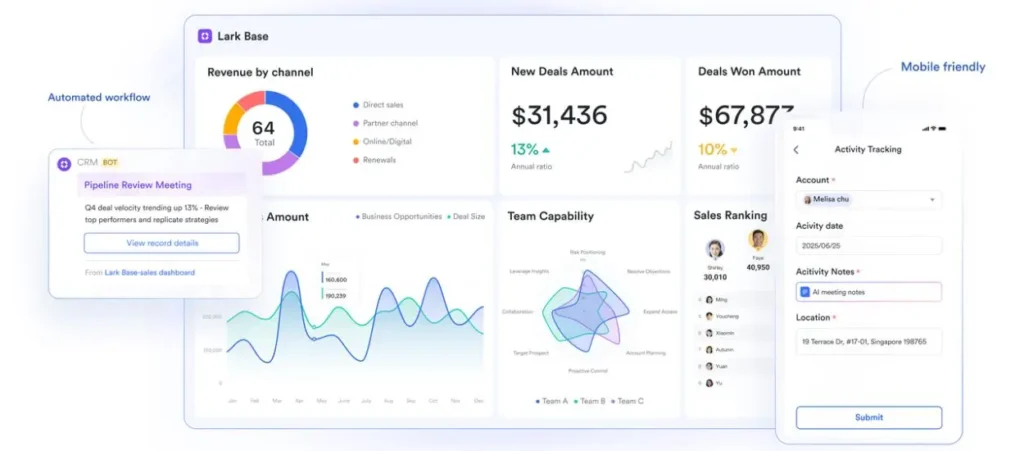
One of the biggest challenges teams face is knowledge scattered across different tools and files. Lark Base solves this by creating a single space to organize project details, client records, and decision histories. Instead of functioning only as a data tracker, Base can expand into a CRM app that keeps information structured, dependable, and always within reach.
Base links projects to the documents and approvals they need so that teams may make databases that work for them. Dashboards provide CEOs a quick look at how things are going, and tags and filters help them figure out what has to be done immediately. Linked records make sure that tasks are never done in a vacuum; they are always connected to the bigger picture of work. The platform gets rid of silos, which makes it easy to manage information and take action.
Lark Tasks: Reducing delays with automated workflows
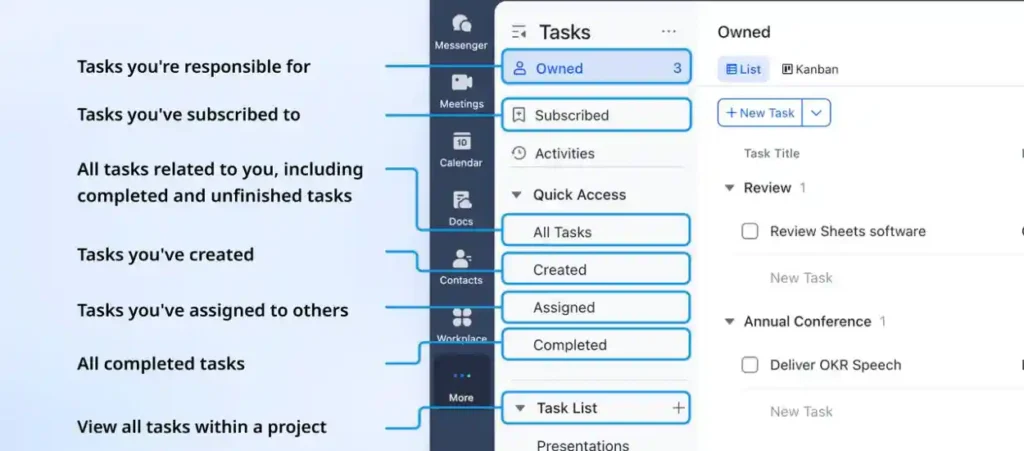
When people don’t know what they need to do or have to do follow-ups by hand, things get really challenging. Lark Tasks tackle these problems by turning ideas into real projects that have owners, due dates, and a way to check on their progress. The strategy makes sure that people are responsible for their work once they are given it, so reminders don’t have to be sent out as often.
Lark has an automated workflow that sends reminders, assigns tasks, and keeps track of their statuses all on its own, without any help from people. This speeds things up even more. You can make procedures that happen on a regular basis, such weekly reports or review cycles, and then use them again and again. You won’t have to set them up over and over again. Task dashboards show management what’s doing well and what’s in danger. This gives them time to act before slight delays turn into big difficulties. You don’t have to worry about the problems that come with doing things by hand anymore with Tasks.
Lark Messenger: Connecting communication with action
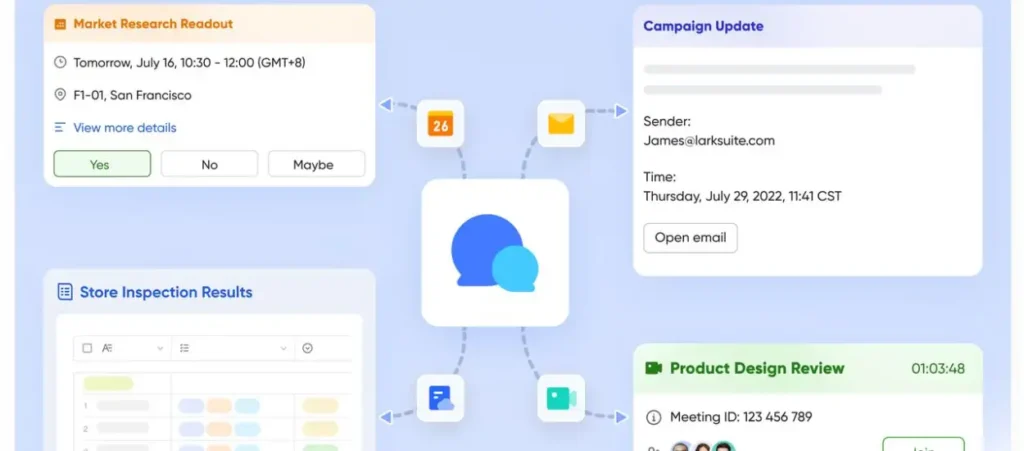
People’s communication generally breaks down when they talk about subjects that aren’t related to their work. When you use Lark Messenger, you can get results right away from talks. You can turn discussions into tasks with just a few clicks, so you won’t lose the decisions you make in chat.
Messenger also makes things clearer by letting teams pin critical updates, share files while they are talking, and tag people to catch their attention quickly. Persistent chat history lets people who are new or who were late view the talks that lead to decisions in the past. Messenger isn’t just a way to speak; it’s what keeps the conversation going and gets things done.
Lark Wiki: Preserving knowledge to prevent repetition
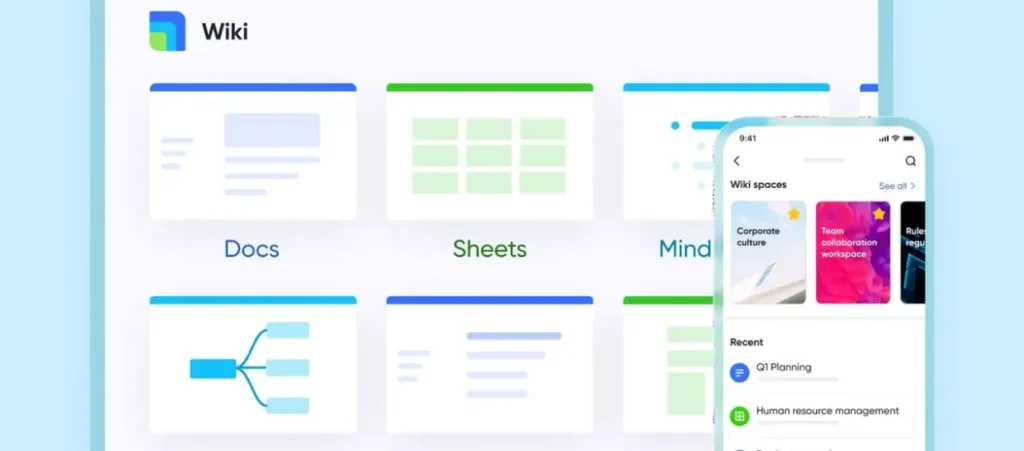
It can also be hard when teams keep using the same explanations or steps again and over. Lark Wiki solves this problem by being a place where people can save and share information. You can write down policies, how-to manuals, and best practices once and then share them with everyone.
Instead of asking other people, employees can use the Wiki to discover credible solutions to their questions. You may link sites to tasks or send them right to Messenger, which keeps information close to the activity. When things change, collaborative editing helps keep information up to date. Wiki keeps all of a team’s information in one place, which saves time and stops them from having to address the same problems over and over again.
Lark Mail: Smoothing external and internal continuity
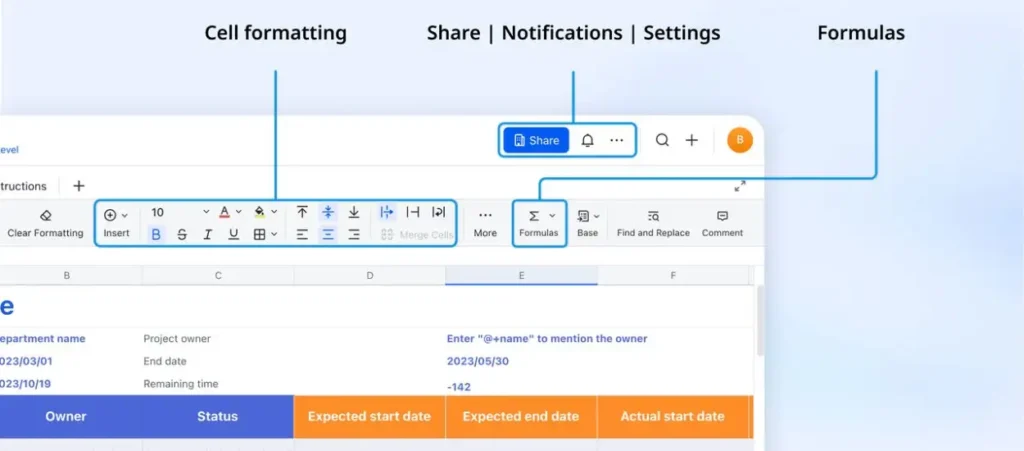
Managing interaction with people outside of the company, as well as with people inside the company, may frequently make it hard to keep things running smoothly. Lark Mail makes this problem less of a problem by putting emails from outside the firm in the same place as tasks and records.
When teams share an inbox, it’s easier for everyone to deal with messages from customers or partners. This makes sure that everything runs properly, even when roles change. Smart filtering makes important requests stand out, and links to Tasks or Base connect emails to work that is already going on. Employees can respond to outside inputs without compromising their internal alignment, so they don’t have to switch platforms. This makes it easy to get things done inside the company and talk to people outside of it.
Lark Sheets: Bringing data into the workflow
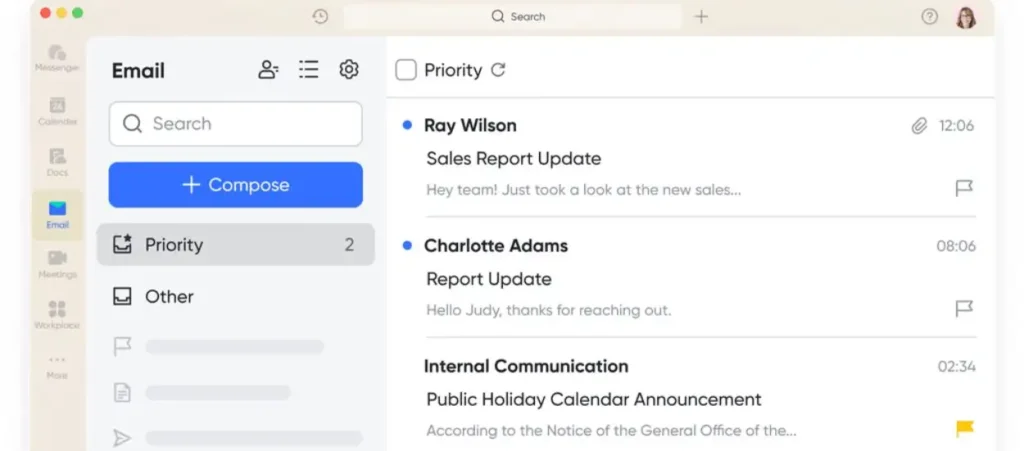
When judgments are dependent on numbers that are stuck in static spreadsheets, data silos can slow things down. Lark Sheets fixes this by bringing you live, collaborative spreadsheets that are connected to projects that are still going on. Teams can look at and change data together, which makes sure that everyone is working with the same version of the truth.
By keeping track of your KPIs, you can see how close you are to reaching your goals. Dashboards make it simple to converse about data. Automated updates make it less necessary to enter data by hand, which maintains metrics up to date. You can also send sheets to records in Base or link them to records in Base. This puts the information right into the decision-making process. Putting data into workflows this way makes things easier and gives people more faith in the results.
Conclusion
Workflow friction is one of the key problems that stops people from being innovative and getting things done. But all-in-one platforms are helping firms get over it. Base anchors structured records, Tasks cuts down on manual delays, Messenger connects talk to action, Wiki keeps shared knowledge, Mail connects outside inputs, and Sheets embeds data into daily work. Lark offers all of these features, which make it easier for teams to work quickly and clearly.
A connected platform not only makes things run more smoothly, but it also enables you get rid of things that slow down progress. Companies make it easier for work to flow by cutting down on duplication, confusion, and keeping everything connected. In today’s fast-paced world, platforms that make things easier aren’t just nice to have; they’re necessary for long-term success.






